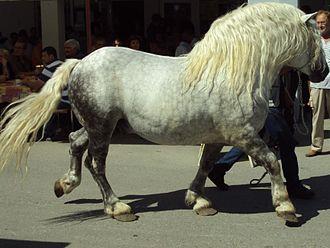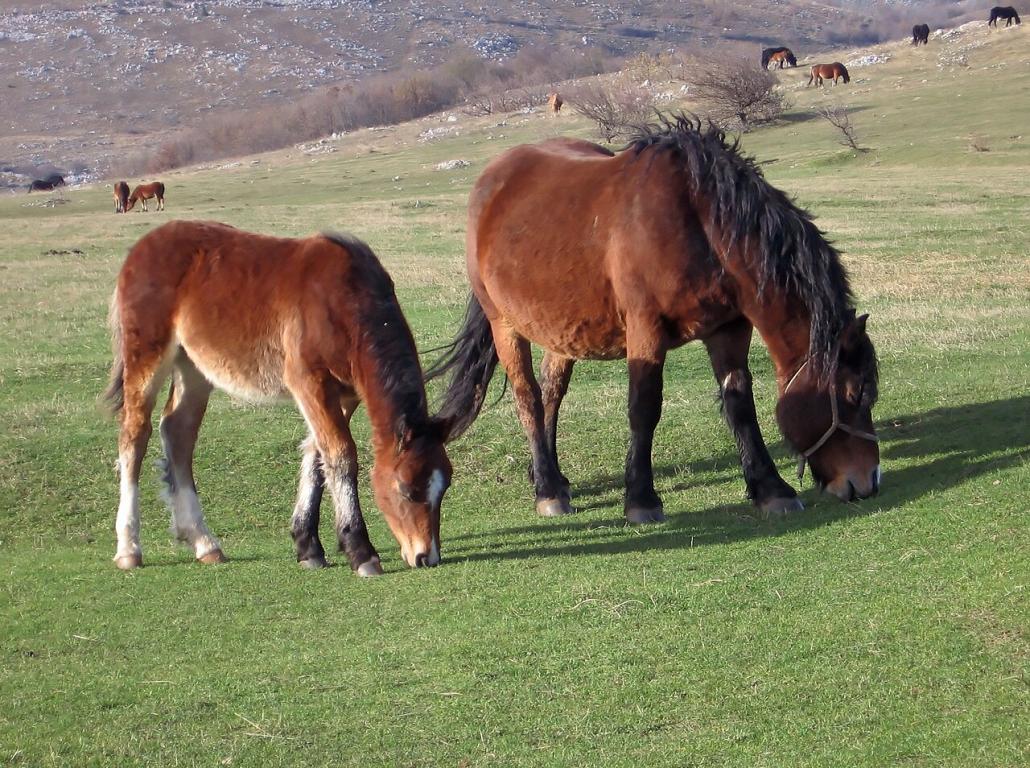
Continent: Europe
Country: Croatia
Weight: 625 – 750 kg
Height: 160 – 165 cm


The Croatian Coldblood originates from northern regions of Croatia, particularly Međimurje, Posavina, Podravina, and parts of Slavonia.
The breed developed during the 19th century through crossbreeding of local horses with various imported European draft breeds, such as the Percheron, Noriker, Ardennais, and Belgian Draft.
This geographical origin reflects the agricultural and forestry needs of the region, where breeding focused on producing horses that were strong, hardy, and versatile, suitable for draft work in the fields and forests. In more recent decades, the breed has also been valued for meat production.
Breeding of the Croatian Coldblood is mainly concentrated in northern and eastern Croatia, particularly in the historical regions of:
- Međimurje
- Posavina
- Podravina
- Slavonia
These regions, located along the Sava and Drava rivers, provide ideal conditions for extensive breeding: humid pastures, fertile plains, and accessible forests for logging work.
The breed is also found in neighboring countries, notably:
- Slovenia, with around 1,000 mares and 150 stallions recorded
- Other bordering Balkan regions, where its use remains limited
This rustic horse is typically raised in small family herds, on limited pastures, and under constant human supervision, in line with traditional breeding practices still alive in these areas.
The Croatian Coldblood plays a significant role in the equine genetic heritage of the Balkans.
Resulting from crossbreeding between several European draft breeds (notably the Percheron, Noriker, Ardennais, and Belgian Draft), it helped create a lineage adapted to local agricultural conditions, while preserving strong hardiness and pulling power.
Genetically, this breed is a valuable reservoir of diversity, useful for maintaining traits such as frugality, strength, and adaptation to harsh terrain. It has also contributed to the development or reinforcement of other local breeds, such as the Posavina and Murinsulaner.
Furthermore, genetic characterization studies (notably by the University of Zagreb and Wageningen) confirm that the Croatian Coldblood displays distinctive features, justifying its preservation as an autonomous breed.
The Croatian Coldblood (hrvatski hladnokrvnjak) originated in the early 19th century, when the first organized horse breeding began in the regions of Međimurje, Posavina, Podravina, and Slavonia. These rural areas, shaped by agriculture and forestry, needed horses that were strong and enduring for draft work.
In the early 20th century, breeders began crossing local horses with renowned European draft breeds such as Percheron, Noriker, Ardennais, Belgian Draft, and Hungarian horses to enhance physical qualities. This breeding work gradually established a type suited to local needs: hardy, frugal, and versatile.
For a long time, the breed lacked official recognition. The stud-book was finally opened in 1994, driven by breeder organizations.
Between 1999 and 2011, the breed saw a significant increase in numbers, growing from just over 1,000 individuals to more than 6,000. This expansion was due to the breed’s meat value and improved breeding management.
In 2005, a genetic study on Croatian local breeds confirmed that the Croatian Coldblood is a distinct breed, alongside the Posavina and Murinsulaner, with closer genetic ties to the latter.
Today, although considered at risk in certain databases (notably DAD-IS, 2018), the breed benefits from conservation programs and remains deeply rooted in Croatia’s rural landscape.
The Croatian Coldblood is known for its calm temperament, docility, and frugality. Originally selected for agricultural and logging work, it retains a reliable and composed character, crucial for operating in demanding environments such as forests or small rural farms.
The breed is appreciated for its ease of handling, even by inexperienced breeders, making it a rustic and accessible horse well-suited to traditional management.
Typical behavioral traits include:
- Great patience
- Stress resistance
- Good capacity for steady work
- A stable nature, without excessive energy
Its behavior is especially suited to life in small herds, under close human supervision, which remains common in rural Croatia.
The future outlook of the Croatian Coldblood is mixed.
On one hand, the breed has strong national presence, with about 7,000 individuals recorded in 2016, making it the most common horse breed in Croatia. Since 2006, it has benefited from an in situ conservation program, supported by local institutions and breeders.
However, several challenges remain:
- A primary use in meat production, which limits the breed’s functional versatility
- Breeding is often confined to small family farms, with limited generational renewal
- Classified as “at risk of extinction” by DAD-IS in 2018, despite being considered stable by other institutions (e.g. FAO)
To ensure long-term survival, active valorization efforts are needed:
- Promote alternative uses (logging, agritourism, dairy or meat product valorization)
- Strengthen structured genetic selection and highlight the breed’s rustic, frugal traits
- Include the breed in European conservation programs for local breeds
The future of the Croatian Coldblood will therefore depend on a collective will to maintain it as a living symbol of Croatia’s rural heritage.
The Croatian Coldblood is generally considered a robust and hardy breed, well-adapted to diverse climates and the modest pastures of rural Croatia. Its resilience results from natural and functional selection in small-scale family farms, often under semi-extensive conditions.
To date, no major genetic predispositions or hereditary diseases have been widely reported in scientific literature or official databases (DAD-IS, veterinary studies).
However, as with many draft breeds:
- Overfeeding (due to poor diet management) may lead to metabolic issues (laminitis, obesity)
- Lack of exercise can affect the locomotor system, especially in horses bred solely for meat
- Selection focused on muscle mass requires close veterinary monitoring to avoid morphological or reproductive issues
Horses in conservation programs are usually closely monitored, particularly breeding stock registered in the stud-book.